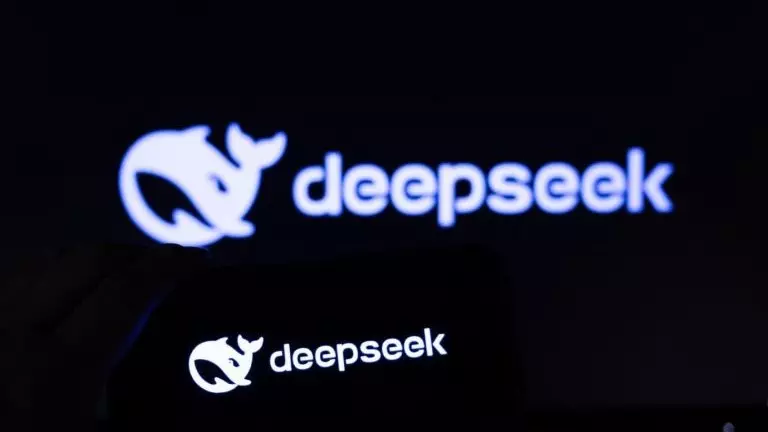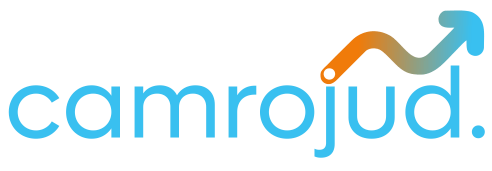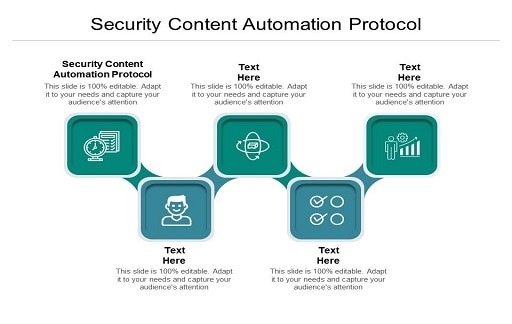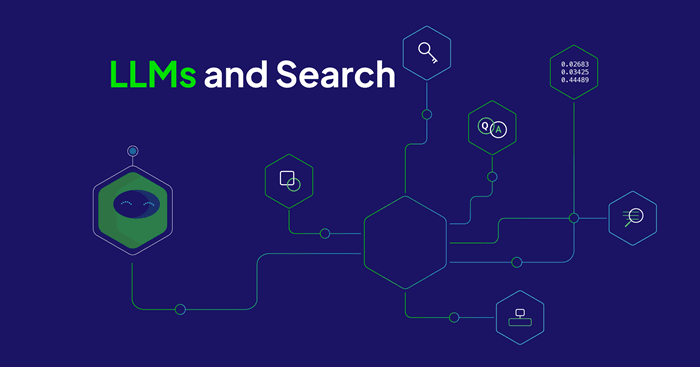In the fast-changing world of digital marketing, one needs to keep their finger on the pulse. Welcome DeepSeek AI, the game changer in the SEO landscape. But how does it fare against traditional SEO tools? More importantly, how can you tap into its power to raise your website ranking?
In this article, we delve into how you can optimize your website for Deepseek AI for better SEO results and ranking on search engines.

What is DeepSeek?
Let’s get one thing straight: DeepSeek is two things; a rising Chinese AI company and a suite of tools that are revolutionizing verticals as varied as SEO, coding, and data analysis. Think of it as China’s answer to OpenAI, but with a twist: instead of chasing bigger, pricier models, DeepSeek focuses on lean, open-source AI that punches above its weight.
Whether you’re a marketer hearing about “DeepSeek SEO” or a developer curious about its coding prowess, here’s the lowdown on what DeepSeek is, why it matters, and how it’s changing the game.
DeepSeek 101: The AI Powerhouse
DeepSeek is an AI startup from Shenzhen founded in 2023, and it has quickly gained fame for building models to rival giants like GPT-4 but at 1/10th of the cost. Flagship DeepSeek R1, in 2024, outperformed GPT-3.5 in coding and logical reasoning, despite being merely US$6 million to train.
The Key Innovations on DeepSeek:
- Sparse Training: This targets high-quality data instead of brute-forcing through the internet.
- Hybrid Architecture: Melding transformers and modular neural networks for adaptability.
- Open-source Flexibility: Shared model weights and, quite often, frameworks are open source, while many Western models are closed source.
But DeepSeek isn’t just an AI lab. It’s also a toolkit. Let’s break down this dual identity:
1. DeepSeek as an AI Model
DeepSeek R1 is an AI model over text-modification with the aim of precision tasks; Coding, bugs, generating code in Python or JavaScript, refactoring older code,.
- Data Analysis: Crunching complex datasets, such as financial trends or medical research.
- Technical Writing: It creates manuals, research papers, and API documentation.
Unlike ChatGPT, it doesn’t have fancy features like image generation; instead, it focuses on being reliable for businesses and developers.
You can also read: The Future of OpenAI and DeepSeek Open-Source Models
2. DeepSeek as an SEO & Marketing Tool
Here’s where marketers perk up. DeepSeek’s AI powers tools that automate and optimize SEO workflows, including:
- Keyword Research: Identifies long-tail keywords and predicts trends using natural language processing.
- Content Optimization: This tool scores drafts for readability, SEO alignment, and search intent.
- Backlink Analysis: This tool flags spammy links and suggests high-authority domains.
For example, its SEO Content Scoring Tool acts like Grammarly for SEO, optimizing meta tags, headers, and keyword placement.
How to Use DeepSeek AI for SEO Optimization
Having DeepSeek AI optimize your website is like having a seasoned SEO expert right in the trenches with you. Here’s how to maximize your advantage with Deepseek:
DeepSeek AI performs advanced keyword research that burrows deep into search intent to find long-tail keywords your active audiences are searching for. Long-tails, in turn, will help to create content that will hit a home run in meeting user needs.
DeepSeek AI goes way beyond keywords; it analyzes structure, readability, and relevance in your content. It provides actionable insights to optimize on-page SEO elements in ways that will make your content more user-friendly and search-engine-optimized.
It is very important to understand your backlink profile. DeepSeek AI analyzes the quality of your backlinks, identifies potential toxic links, and offers strategies to build a robust link profile.
You can also read: What is Generative AI, ChatGPT, and DALL-E?
DeepSeek SEO vs. Traditional SEO Tools: Which Is Better?
The debate between DeepSeek AI and traditional SEO tools is like comparing a modern electric car to a classic gasoline vehicle. The bottom line is, that both of them have their advantages, but let me break this down:
| Feature | DeepSeek AI | Traditional SEO Tools |
|---|---|---|
| AI-Powered Insights | Leverages artificial intelligence to provide predictive analytics and real-time data. | Relies on historical data and manual analysis. |
| User Experience | Offers a conversational interface, making it intuitive even for beginners. | Often comes with a steeper learning curve and requires more manual input. |
| Data Processing | Processes vast amounts of data quickly, offering actionable insights in real-time. | It may take longer to analyze data and often requires manual interpretation. |
| Cost Efficiency | Potentially reduces content creation costs by automating tasks. | May incur higher costs due to manual processes and the need for multiple tool integrations. |
| Customization | Adapts to user behavior, offering personalized recommendations. | Provides standard features with limited personalization. |
In essence, while traditional tools have paved the way, DeepSeek AI offers a more dynamic, efficient, and user-friendly approach to SEO.
How Does DeepSeek AI Search Engine Process Queries?
DeepSeek’s AI search engine processes the queries by applying natural language processing and deep learning algorithms to understand user intent. That means complex, conversational queries can be handled much better than what old search engines are capable of. To align your content with this capability:
- Use Natural Language: Create your content in a conversational tone, anticipating the questions users might ask.
- Long-tail keywords: These involve very specific terms that relate directly to the user’s search query, such as “best Italian restaurants in Chicago,” rather than just “restaurants.”
DeepSeek doesn’t just match keywords; it dissects intent when a user types.
For example, “how to fix a leaky faucet” may be answered by:
- Semantic Analysis: It identifies the goal (“fix”), object (“faucet”), and context (“leaky”).
- Context Expansion: It pulls related search terms like “plumbing tools” or “water damage prevention.”
- Personalization: It gives results tailored to the user’s location or previous behavior.
In ranking on DeepSeek AI Search, long-tail keywords are what your optimization should focus on to emulate natural speech. Instead of short-tail keywords such as “SEO tips,” target long-tail keywords such as “how to improve SEO for small businesses in 2025.”
Optimizing Your Website for Local DeepSeek Ranking Factors
If your target audience were local, do the following:
- Local Keywords: Use phrases that now incorporate local terms or neighborhoods.
- Local Listings: Make sure your business is listed in local directories and platforms pertinent to your industry.
Key Differences Between DeepSeek Search, ChatGPT, and SearchGPT
Knowing how these AI search engines differ will provide the foundation for your optimization approach:
- DeepSeek Search: It focuses much more on NLP-driven contextual results.
- ChatGPT: Because it was designed to converse, it probably takes less care regarding the relevance in searching.
- SearchGPT: Similar to DeepSeek in approaches, but does not dive deep into query understanding.
| Feature | DeepSeek Search | ChatGPT | SearchGPT |
|---|---|---|---|
| Primary Use | Contextual search | Conversational AI | Hybrid search/chat |
| Real-Time Data | Yes | No | Limited |
| Citation Accuracy | High | Low | Medium |
While ChatGPT excels in dialogue, DeepSeek is your go-to for actionable and up-to-date answers.
Is DeepSeek Search Better Than Google?
Well, that depends on the use case. Google is good for broad queries like “weather today,” while DeepSeek, however, shows results relevant in context and would be ideal for specialized searches. It does well in niche and intent-driven searches, such as “How to troubleshoot WiFi issues on Windows 11.” The ideal case for businesses is to make use of both.
Optimizing for DeepSeek isn’t about reinventing the wheel—it’s about refining your strategy to align with AI’s nuanced understanding of human intent. Focus on quality, context, and continuous improvement, and you’ll not only rank higher but also build a loyal audience.
How to Let DeepSeek Search Crawl Your Website
For DeepSeek to index your site, you must ensure that:
- Your sitemap is updated and submitted through the proper channels.
- The robots.txt file allows DeepSeek crawlers to access the relevant pages on your site.
You can allow the SearchGPT crawler on your website by adding the following line of code in your robots.txt file:
User-agent: DeepSeekBot
Disallow: /private/
Disallow: /admin/
How DeepSeek Search Crawlers Work
DeepSeek’s crawlers crawl the web pages based on their content and structure, and to align with their operation, you must:
- Prioritize Load Speed: Crawlers love fast-loading pages; therefore, such web pages improve your chances of ranking higher.
- Mobile Optimization: Make sure that your website is mobile-friendly because most users browse information through their phones.
How To Boost Search Engine Ranking with DeepSeek AI
Climbing the search engine ranks is the holy grail of SEO, and DeepSeek AI is the sherpa to help get you there. Below is how DeepSeek can help you boost your website ranking on the search engines:
- Real-Time Trend Analysis: Staying ahead by riding emerging trends. DeepSeek AI analyzes real-time data, thereby enabling you to create content in tune with current audience interest.
- Competitor Insights: Knowing what your competitors do right and what they do wrong is a good advantage for your brand. DeepSeek AI analyzes competitor strategies and identifies the gaps where you can get an advantage.
- User Intent Matching: DeepSeek helps decode the intent behind the searches by ensuring that your content is exactly what the users are looking for, hence driving more engagement and better rankings on the SERP and AI result pages.
How to Find High-Ranking Keywords Using DeepSeek AI
Keywords are important in SEO; finding the right ones is all that matters. Well, here’s how DeepSeek AI simplifies that for you:
- Semantic Analysis: DeepSeek AI doesn’t work on exact-match keywords but goes deeper to understand what the context suggests by offering semantically related terms that can cover a wider audience.
- Long-tail Keyword Identification: These keywords are often less competitive and hence more targeted. DeepSeek AI identifies long-tail opportunities that can drive highly qualified traffic back to your website.
- Competitor Keyword Analysis: Find what keywords drive relevant traffic to competitors’ websites and use this to your advantage.
You can also read: The Revolutionary Impact of Generative AI on the Future of Marketing
DeepSeek AI Keyword Research Tips for Better Rankings
To maximize these keyword research capabilities with DeepSeek AI:
- Focus on User Intent: Have your keywords align with what exactly your audience is looking for, and this alone will bring an increase in conversion rates and improved engagement.
- Diversify Your Keyword Profile: Never put all your eggs in a single basket. Go for both short-tail and long-tail keywords to capture different audience segments.
- Regularly Update Your Keyword List: The digital world is moving at a fast pace. Revisiting and updating your keyword strategy regularly will help you stay updated and competitive.
How DeepSeek AI Automates On-Page SEO Tasks
On-page SEO can be quite a bore, but thanks to DeepSeek AI, the process is smooth. Here is how you can use the cheap open-source AI model to automate on-page SEO tasks:
- Meta Tag Optimization: It auto-generates creative meta titles and descriptions for better click-through rates.
- Header Tag Structuring: Suggests the best header tag hierarchies that enhance readability and on-page SEO
- Image Alt Text Recommendations: Make alt text recommendations to ensure images are also working according to your SEO efforts.
You can also read: How To Use Generative AI Strategies To Improve SEO Results
How to Rank Higher on Google with DeepSeek AI
Here is how you can use DeepSeek to rank higher on Google:
- Content First: Use DeepSeek to draft posts that answer exactly what searchers want.
- Technical Tune-Up: Fix site speed, mobile errors, and broken links.
- Backlink Blitz: Target 2-3 high-authority sites monthly.
- Track & Adapt: Let DeepSeek’s real-time rank tracker adjust your strategy as algorithms change.
Update old posts. DeepSeek’s “Content Refresh” tool can be used to identify outdated articles and suggest new keywords to revive them.
Why DeepSeek SEO Rank Tracking Tool is Changing the Way You Monitor Rankings
Keeping track of your keyword rankings is one of the most important parts of SEO. Without clear data, you are guessing. DeepSeek SEO rank tracking tool helps you stop guessing and start making data-driven decisions that grow your website visibility.
DeepSeek gives you real-time keyword ranking updates. You can see exactly where your pages stand on Google, Bing, or Yahoo, and how they move over time. It lets you monitor local and global results, helping you spot trends that affect your traffic. The dashboard is clean and simple, so you don’t need to be a technical expert to use it. You get easy-to-read graphs, daily rank updates, and keyword comparison tools that show what’s working and what needs improvement.
What makes DeepSeek different is its accuracy and speed. Many rank tracking tools show delayed or incomplete data. DeepSeek uses advanced algorithms that scan search engines in real time, giving you the most reliable insights. It also integrates with Google Analytics and Search Console, so you can track keyword performance, traffic, and conversions in one place.
If you manage SEO for clients, DeepSeek saves time. You can generate branded reports, track multiple domains, and export results for client updates. This keeps your reporting transparent and professional.
In short, DeepSeek SEO rank tracking tool helps you stay ahead. It gives you clarity, control, and confidence in your SEO performance. When you understand your rankings, you can focus on strategies that bring real results.
DeepSeek SEO Ranking Tools and Features
Keyword Research & Analysis
- Finds high-volume, low-competition keywords.
- Suggests long-tail and region-specific keyword ideas.
Rank Tracking
- Tracks where your pages rank for chosen keywords.
- Monitors fluctuations over time so you see gains and drops.
Content Optimization
- Analyzes readability, keyword density, and user intent.
- Recommends improvements (e.g. structure, meta tags, schema).
Competitor Analysis/Gap Analysis
- See what keywords competitors rank for, where their strengths and weaknesses lie.
- Identify content gaps you can fill.
Technical SEO Tools
- Audit for crawl errors, broken links, etc.
- Schema-markup generation.
- Internal linking suggestions, site structure checks.
Freshness & User Intent Adaptation
- Updates content recommendations as trends or search intent change.
- Optimizes also for voice searches, natural language queries.
Backlink Monitoring/Link Profile Analysis
- Tracks backlinks, checks for harmful or weak links.
Data Visualization & Reporting
- Shows insights, dashboards, and reports for strategy and performance.
DeepSeek SEO Ranking Tools Comparison
| Tool | What It Does | How It Helps You | How to Use It |
|---|---|---|---|
| Keyword Research | Finds valuable keywords with low competition. | Targets keywords that drive traffic faster. | Enter a topic or niche. DeepSeek lists related keywords with search volume, difficulty, and intent. |
| Rank Tracking | Monitors your keyword positions daily. | Shows ranking progress, helps you measure SEO performance. | Add target keywords and website URL. Check rankings daily or weekly in the dashboard. |
| Content Optimization | Analyzes pages for SEO score, keyword use, and readability. | Improves content relevance and user engagement. | Paste your page URL or text. Follow DeepSeek’s improvement suggestions. |
| Competitor Analysis | Tracks what competitors rank for. | Reveals keyword and backlink gaps you can target. | Enter competitor domains. Review their top keywords and backlinks. |
| Technical SEO Audit | Scans site for crawl errors, broken links, and slow pages. | Improves site health and indexing. | Run a site audit. Fix highlighted errors like 404s, missing tags, or slow-loading images. |
| Backlink Monitoring | Tracks gained and lost backlinks. | Helps maintain a strong link profile. | Add your domain. DeepSeek will update your backlink list automatically. |
| Trend & Intent Tracking | Detects changes in keyword trends and user intent. | Keeps your content relevant to new searches. | Review DeepSeek’s “Trend Insights” weekly. Adjust content to fit new search terms. |
| Reporting Dashboard | Displays keyword, traffic, and backlink data. | Gives quick overviews for you or clients. | Use export options to generate PDF or CSV reports for clients or presentations. |
Step-by-Step: How to Use DeepSeek for SEO Ranking Success
Step 1: Start with Keyword Research
- Find 10–20 high-intent keywords that match your niche.
- Choose keywords with high volume and low difficulty.
Step 2: Track Rankings Daily
- Add these keywords to the Rank Tracker.
- Watch their movement on Google and note trends.
Step 3: Optimize Your Content
- Run each page through DeepSeek’s optimizer.
- Improve on-page elements like titles, meta descriptions, and headings.
Step 4: Study Your Competitors
- Add competitor domains to see what keywords and backlinks they use.
- Use those insights to create better and more complete content.
Step 5: Run a Technical Audit Weekly
- Fix crawl errors, missing tags, or slow pages.
- Keep your site technically sound for better indexing.
Step 6: Monitor Backlinks
- Track new and lost backlinks.
- Disavow harmful links if needed.
Step 7: Review Reports Monthly
- Export rank and traffic reports.
- Use them to plan new content or client updates.
The Bottom Line: Is DeepSeek SEO Worth the Hype?
Yeah, but with one caveat: DeepSeek changes the game for smaller teams and niche sites, but it is not quite a magic wand. Add your human touch with creativity; that’s what makes your brand, and AI just won’t cut it, yet.
Traditional SEO isn’t dead. It is here to stay as a backup vocal behind DeepSeek, the lead voice.








